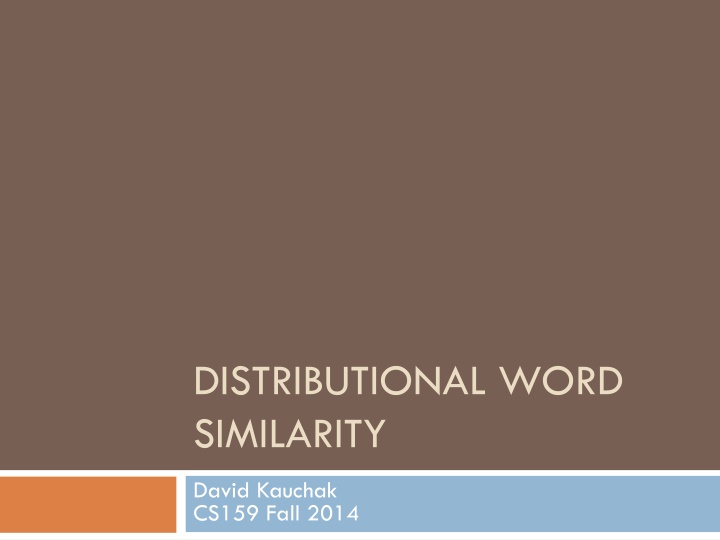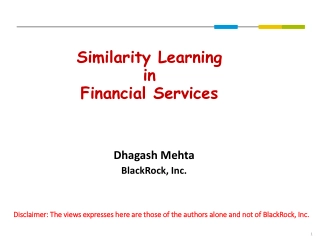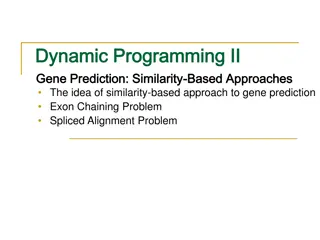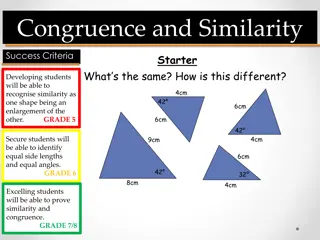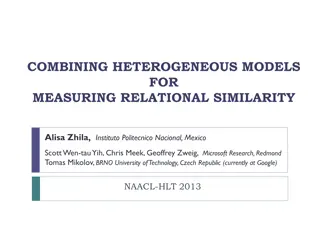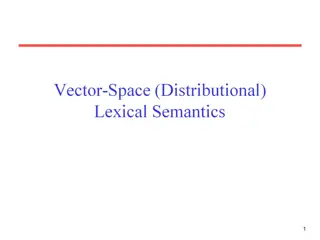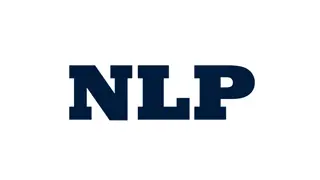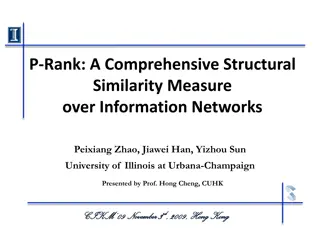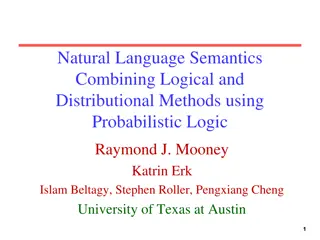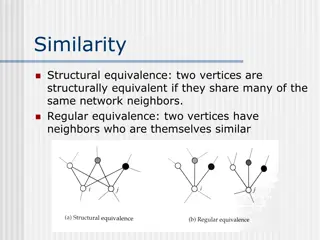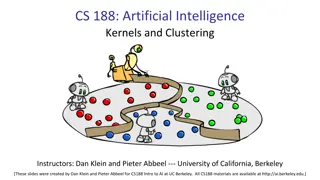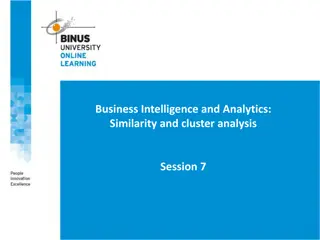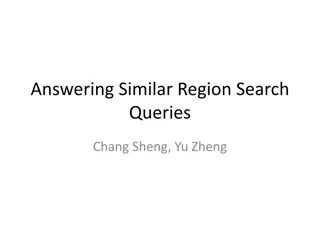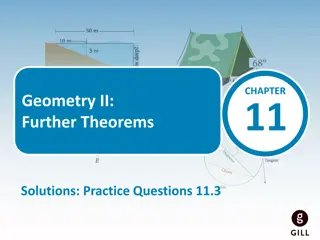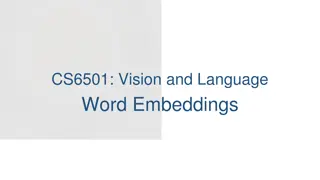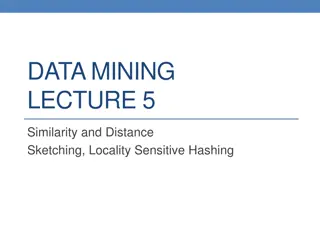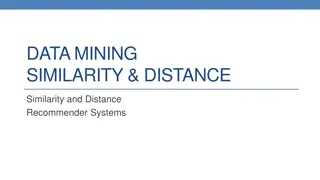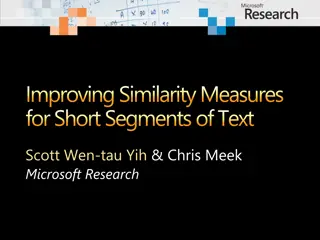DISTRIBUTIONAL WORD SIMILARITY
This content delves into various methods for determining similarity between words, including distributional, dictionary-based, and semantic approaches. It also covers the challenges of handling words with multiple senses or parts of speech. The content showcases examples and visuals to illustrate the concepts effectively.
Download Presentation

Please find below an Image/Link to download the presentation.
The content on the website is provided AS IS for your information and personal use only. It may not be sold, licensed, or shared on other websites without obtaining consent from the author.If you encounter any issues during the download, it is possible that the publisher has removed the file from their server.
You are allowed to download the files provided on this website for personal or commercial use, subject to the condition that they are used lawfully. All files are the property of their respective owners.
The content on the website is provided AS IS for your information and personal use only. It may not be sold, licensed, or shared on other websites without obtaining consent from the author.
E N D
Presentation Transcript
DISTRIBUTIONAL WORD SIMILARITY David Kauchak CS159 Fall 2014
Admin Assignment 5 out
Word similarity How similar are two words? w1 w2 w3 w ? sim(w1, w2) = ? rank: score: list: w1 and w2 are synonyms
Word similarity Four categories of approaches (maybe more) Character-based turned vs. truned cognates (night, nacht, nicht, natt, nat, noc, noch) Semantic web-based (e.g. WordNet) Dictionary-based Distributional similarity-based similar words occur in similar contexts
Word similarity Four general categories Character-based turned vs. truned cognates (night, nacht, nicht, natt, nat, noc, noch) Semantic web-based (e.g. WordNet) Dictionary-based Distributional similarity-based similar words occur in similar contexts
Dictionary-based similarity Word Dictionary blurb a large, nocturnal, burrowing mammal, Orycteropus afer, ofcentral and southern Africa, feeding on ants and termites andhaving a long, extensile tongue, strong claws, and long ears. aardvark One of a breed of small hounds having long ears, short legs, and a usually black, tan, and white coat. beagle Any carnivore of the family Canidae, having prominent canine teeth and, in the wild state, a long and slender muzzle, a deep-chested muscular body, a bushy tail, and large, erect ears. Compare canid. dog
Dictionary-based similarity Utilize our text similarity measures sim(dog, beagle) = One of a breed of small hounds having long ears, short legs, and a usually black, tan, and sim( , white coat. Any carnivore of the family Canidae, having prominent canine teeth and, in the wild state, a long and slender muzzle, a deep-chested muscular body, a bushy tail, and large, erect ears. Compare canid. )
Dictionary-based similarity What about words that have multiple senses/parts of speech?
Dictionary-based similarity 1. part of speech tagging 2. word sense disambiguation 3. most frequent sense 4. average similarity between all senses 5. max similarity between all senses 6. sum of similarity between all senses
Dictionary + WordNet WordNet also includes a gloss similar to a dictionary definition Other variants include the overlap of the word senses as well as those word senses that are related (e.g. hypernym, hyponym, etc.) incorporates some of the path information as well Banerjee and Pedersen, 2003
Word similarity Four general categories Character-based turned vs. truned cognates (night, nacht, nicht, natt, nat, noc, noch) Semantic web-based (e.g. WordNet) Dictionary-based Distributional similarity-based similar words occur in similar contexts
Corpus-based approaches Word ANY blurb with the word aardvark Ideas? beagle dog
Corpus-based The Beagle is a breed of small to medium-sized dog. A member of the Hound Group, it is similar in appearance to the Foxhound but smaller, with shorter leg Beagles are intelligent, and are popular as pets because of their size, even temper, and lack of inherited health problems. Dogs of similar size and purpose to the modern Beagle can be traced in Ancient Greece[2] back to around the 5th century BC. From medieval times, beagle was used as a generic description for the smaller hounds, though these dogs differed considerably from the modern breed. In the 1840s, a standard Beagle type was beginning to develop: the distinction between the North Country Beagle and Southern
Corpus-based: feature extraction The Beagle is a breed of small to medium-sized dog. A member of the Hound Group, it is similar in appearance to the Foxhound but smaller, with shorter leg We d like to utilize or vector-based approach How could we we create a vector from these occurrences? collect word counts from all documents with the word in it collect word counts from all sentences with the word in it collect all word counts from all words within X words of the word collect all words counts from words in specific relationship: subject- object, etc.
Word-context co-occurrence vectors The Beagle is a breed of small to medium-sized dog. A member of the Hound Group, it is similar in appearance to the Foxhound but smaller, with shorter leg Beagles are intelligent, and are popular as pets because of their size, even temper, and lack of inherited health problems. Dogs of similar size and purpose to the modern Beagle can be traced in Ancient Greece[2] back to around the 5th century BC. From medieval times, beagle was used as a generic description for the smaller hounds, though these dogs differed considerably from the modern breed. In the 1840s, a standard Beagle type was beginning to develop: the distinction between the North Country Beagle and Southern
Word-context co-occurrence vectors The Beagle is a breed the: is: a: breed: are: intelligent: and: to: modern: 2 1 2 1 1 1 1 1 1 Beagles are intelligent, and to the modern Beagle can be traced From medieval times, beagle was used as 1840s, a standard Beagle type was beginning Often do some preprocessing like lowercasing and removing stop words
Corpus-based similarity sim(dog, beagle) = sim(context_vector(dog), context_vector(beagle)) the: is: a: breeds: are: intelligent: 5 1 4 2 1 5 the: is: a: breed: are: intelligent: and: to: modern: 2 1 2 1 1 1 1 1 1
Web-based similarity Ideas?
Web-based similarity beagle
Web-based similarity Concatenate the snippets for the top N results Concatenate the web page text for the top N results
Another feature weighting TF- IDF weighting takes into account the general importance of a feature For distributional similarity, we have the feature (fi), but we also have the word itself (w) that we can use for information sim(context_vector(dog), context_vector(beagle)) the: is: a: breeds: are: intelligent: 5 5 1 4 2 1 the: is: a: breed: are: intelligent: 1 and: to: modern: 2 1 2 1 1 1 1 1
Another feature weighting Feature weighting ideas given this additional information? sim(context_vector(dog), context_vector(beagle)) the: is: a: breeds: are: intelligent: 5 5 1 4 2 1 the: is: a: breed: are: intelligent: 1 and: to: modern: 2 1 2 1 1 1 1 1
Another feature weighting count how likely feature fi and word w are to occur together incorporates co-occurrence but also incorporates how often w and fi occur in other instances sim(context_vector(dog), context_vector(beagle)) Does IDF capture this? Not really. IDF only accounts for fi regardless of w
Mutual information A bit more probability p(x,y) p(x)p(y) x y I(X,Y) = p(x,y)log When will this be high and when will this be low?
Mutual information A bit more probability p(x,y) p(x)p(y) x y I(X,Y) = p(x,y)log if x and y are independent (i.e. one occurring doesn t impact the other occurring) then: p(x,y)=
Mutual information A bit more probability p(x,y) p(x)p(y) x y I(X,Y) = p(x,y)log if x and y are independent (i.e. one occurring doesn t impact the other occurring) then: p(x,y)= p(x)p(y) What does this do to the sum?
Mutual information A bit more probability p(x,y) p(x)p(y) x y I(X,Y) = p(x,y)log if they are dependent then: p(x,y)= p(x)p(y|x)= p(y)p(x|y) p(x,y)logp(y| x) x y I(X,Y)= p(y)
Mutual information p(x,y)logp(y| x) x y I(X,Y)= p(y) What is this asking? When is this high? How much more likely are we to see y given x has a particular value!
Point-wise mutual information Mutual information p(x,y) p(x)p(y) x y How related are two variables (i.e. over all possible values/events) I(X,Y) = p(x,y)log Point-wise mutual information How related are two particular events/values p(x,y) p(x)p(y) PMI(x,y) =log
PMI weighting Mutual information is often used for feature selection in many problem areas PMI weighting weights co-occurrences based on their correlation (i.e. high PMI) context_vector(beagle) p(beagle,the) p(beagle)p(the) log the: is: a: breed: are: intelligent: and: to: modern: 2 1 2 1 1 1 1 1 1 How do we calculate these? p(beagle,breed) p(beagle)p(breed) log
